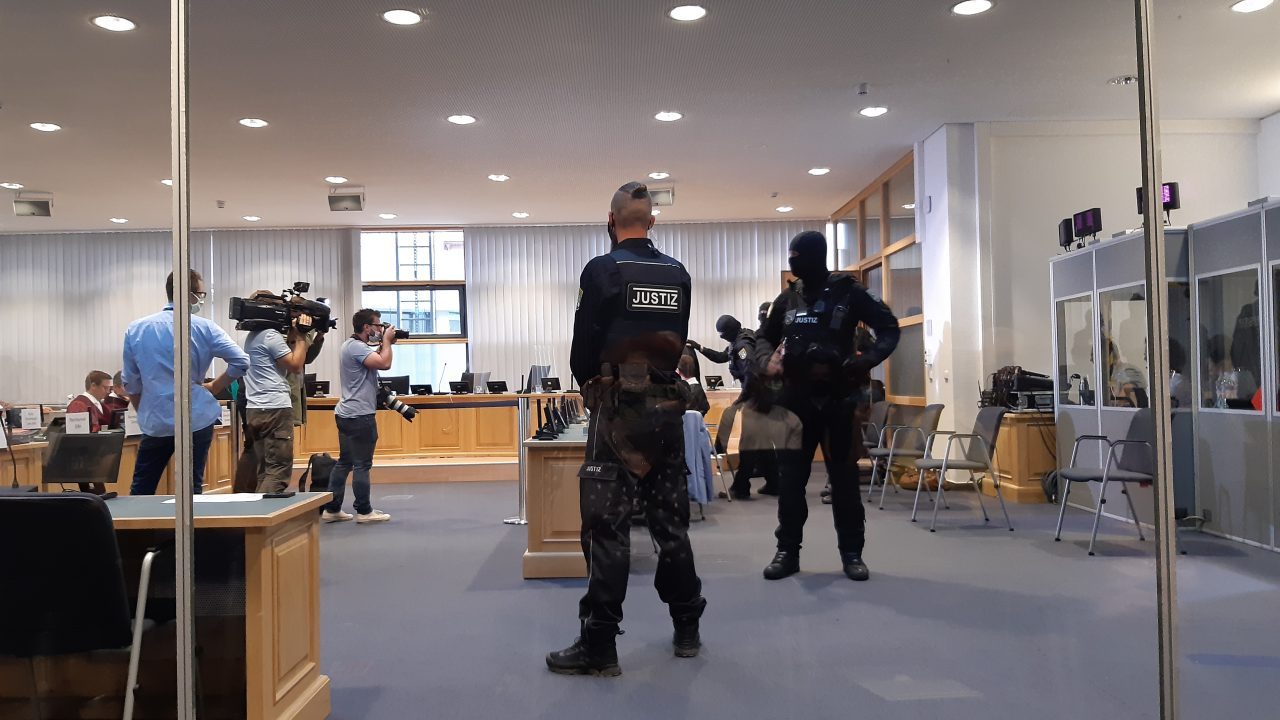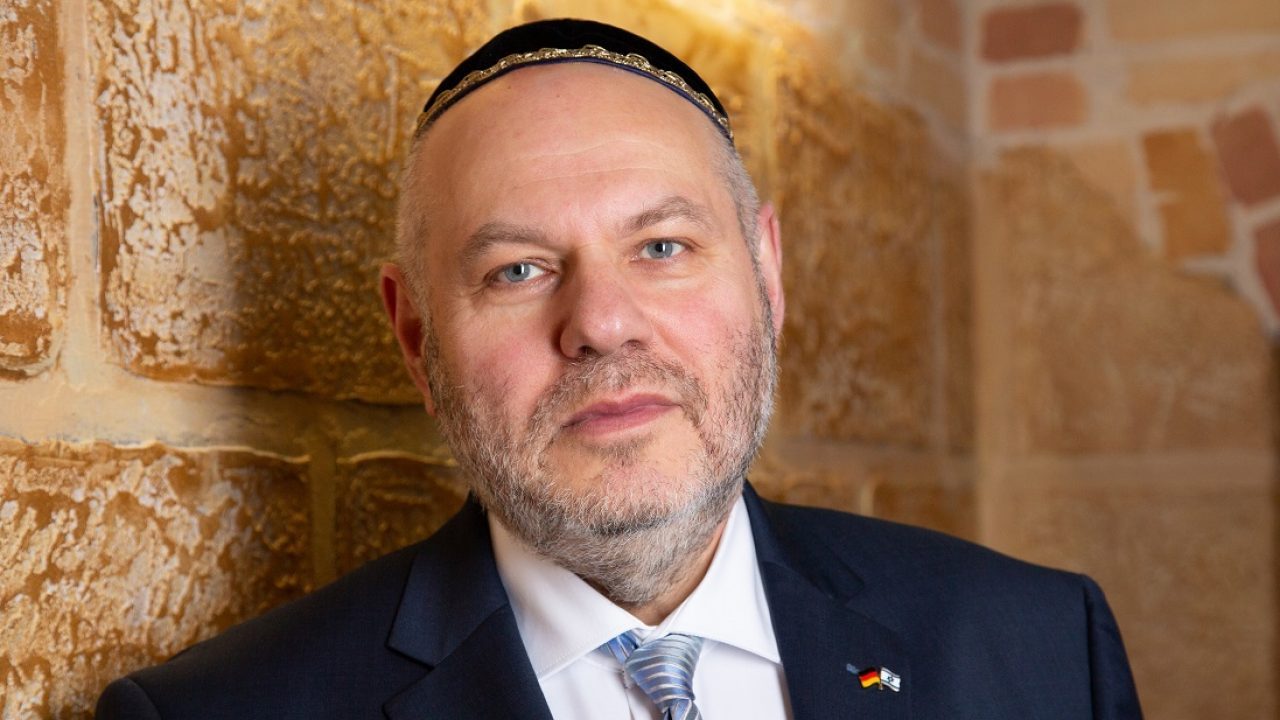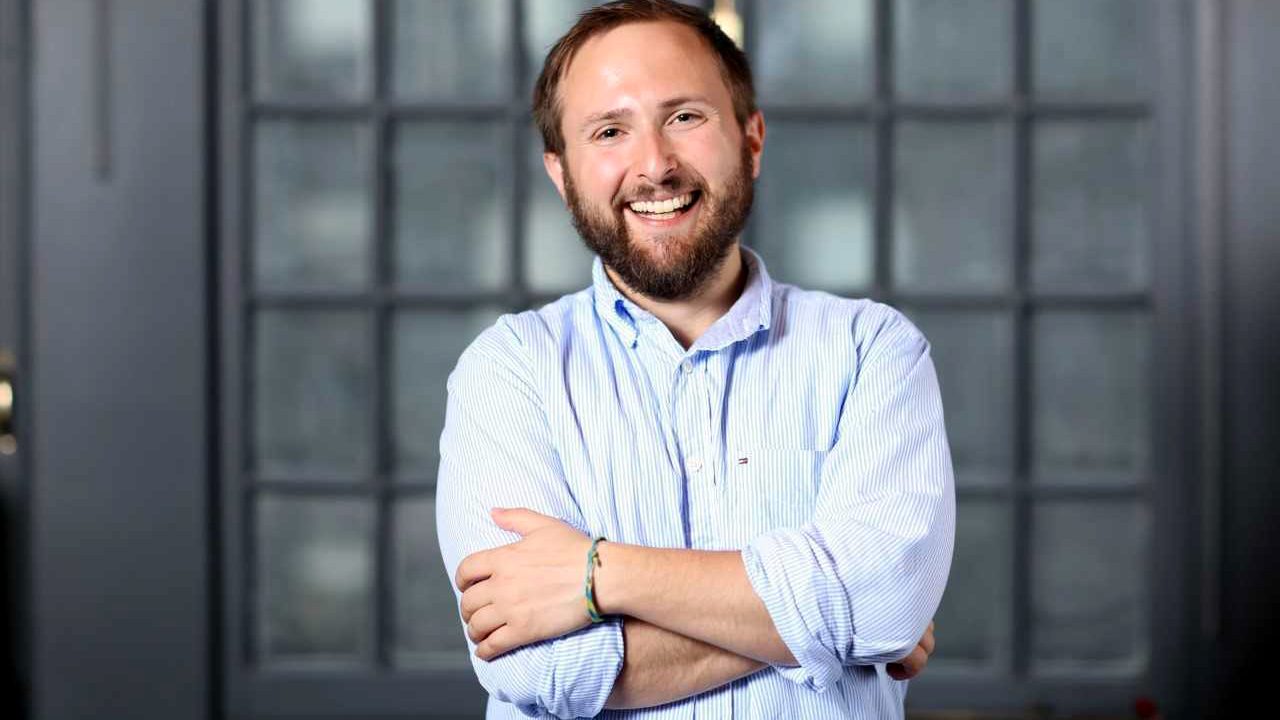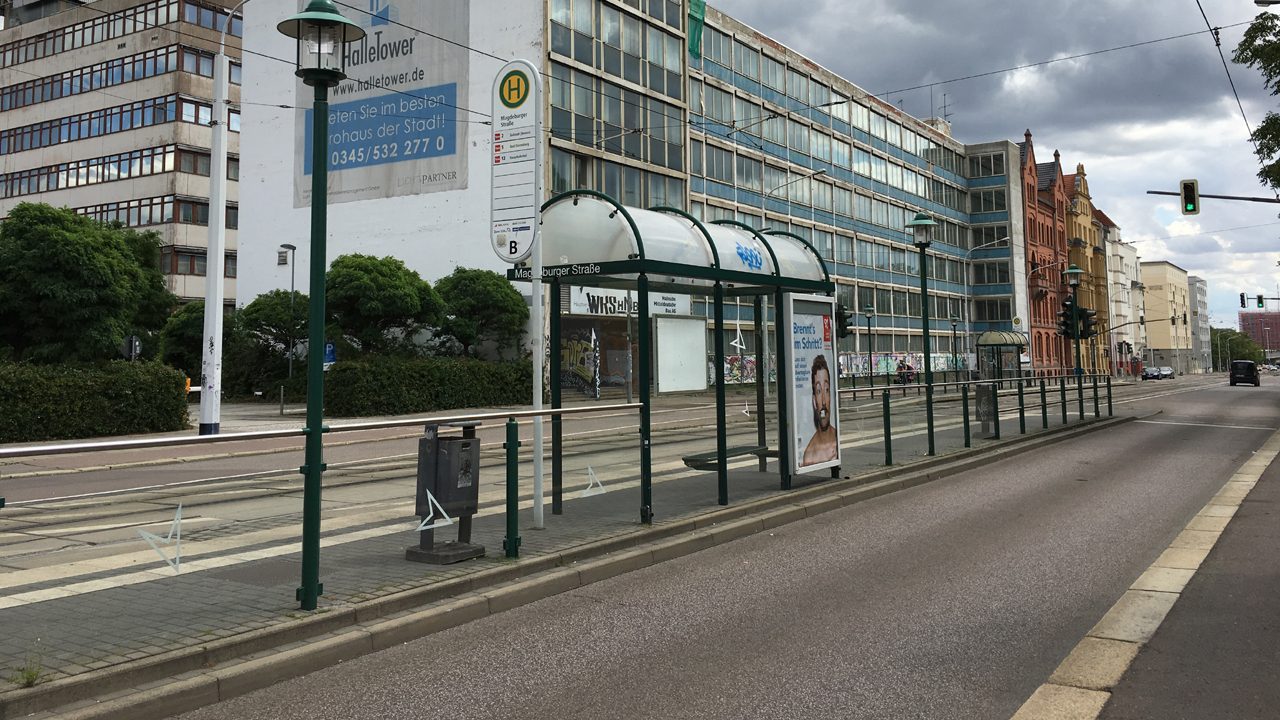
It is one of the most important far-right terror trials in post-war Germany, yet the half-time score after ten trial dates has left many observers and co-plaintiffs frustrated, disappointed and alarmed. On July 21, 2020, the trial against the antisemitic, antifeminist and far-right Halle shooter began at the District Court of Madgeburg in the federal state of Saxony-Anhalt. Over 147 witnesses are listed in the case, with 24 trial dates currently scheduled until mid-November. However, a lacklustre investigation and string of expert witnesses clearly out of their depth when it comes to the internet and gaming already provide a worrying indication that the trial will reveal little we did not know already.
Out of respect to the victims and survivors, who have publicly expressed this wish in an open letter, this article will not name the attacker. It will deny him the infamy he craves after he called on the media at the opening of the trial to neither pixelate his face nor censor his name – as is standard protocol when reporting on trials in Germany. Many of those affected by the attack have been present in the courtroom so far. In Germany, victims can join trials as co-plaintiffs, giving them access to court documents and allowing them to question witnesses. An impressive 43 co-plaintiffs have been approved by the judge in this trial, represented by 21 lawyers. Together, they form the biggest block in the courtroom, outnumbering both the press and visitors.
The accused has been charged with murder in two counts, attempted murder in 68 counts, as well as grievous bodily harm and a list of traffic misdemeanours. On October 9, 2019, in the Jewish calendar the holiest of holidays Yom Kippur, the attacker attempted to storm a synagogue in the city of Halle with an arsenal of homemade weapons and improvised explosives. A camera on his helmet broadcast the attack live on the streaming platform “Twitch”. His opening words: “Hey, my name is Anon. And I think the Holocaust never happened.” His clear aim was to murder the 52 people inside – an attack that would have been the bloodiest antisemitic massacre in post-war Germany. Only a locked wooden door and his own incompetence spared those inside from a more gruesome fate.
Out of frustration, the attacker killed a passer-by, 40-year-old Jana L., who didn’t realise the danger of the situation in front of the synagogue. She made a flippant remark about the noise of the attack, which clearly bruised the killer’s fragile ego. He shot her in the back. After failing to break into the synagogue, the attacker then drove to a nearby kebab shop and murdered 20-year-old Kevin S. He repeatedly shot at other pedestrians en route, who were spared only by the jamming of his homemade guns. On the run, he hit a pedestrian, the refugee Adiraxmaan Aftax Ibrahim. He also seriously injured a man and woman while trying to steal another getaway vehicle. Some 40 kilometres outside of Halle, his rampage came to an end as he crashed into a lorry and was arrested by police.
Before the attack, the killer uploaded an 11-page PDF to the imageboard Meguca in English. It has often been described as a “manifesto” but is titled “A short pre-action report” and in fact details the killer’s homemade weapons at length, as well as offering a brief plan summary of his attack and a game-inspired “list of achievements” – both of which offer a clear insight into his far-right radicalisation and antisemitic ideology.
Many questions, few answers
Expectations were high ahead of the trial, with many questions still unanswered: What are authorities doing to combat radicalisation on imageboards? Why was the attacker’s profile still visible on the imageboard Meguca days after the attack? And why did the authorities then not secure the data from the server before the administrator deleted the entire forum – and with it, all of the attacker’s private messages and posts that could have shed further light on his radicalisation and ideology? What networks of like-minded users was the attacker part of? Was he also in contact with right-wing extremists offline? The authorities have come under particular fire for their handling of the attack: Why was a break-in elsewhere in the city on the day prioritised over an attack on the synagogue? How was the attacker then able to drive back past the synagogue during his getaway after the attack? After being caught, only because of an accident the attacker caused himself, how was he then almost able to escape from prison in May 2020 before the trial? The list of questions goes on, but satisfactory answers are so far few and far between.
The opening day of the trial attracted a wealth of interest and a media buzz. Press and spectators queued up for hours in front of the court building. The start of the hearing had to be delayed until everyone had passed through the robust security measures. Across the road, activists set up a mini stage for a rally, which has accompanied each trial date so far, albeit with a modest crowd of 100-200 people. As the trial wears on, public interest in Magdeburg has died down.
Inside the courtroom, the defendant has revelled in the limelight. He laughs and cackles, crack jokes and asks questions. He goes into minute detail about the construction of his weapons and the logistics of his attack, smiles as the video of the attack is re-played, smirks when the anime “cat girls” in his “pre-action report” are shown on screen. He comes across as increasingly confident while failing to display the slightest slither of remorse. Attempts to espouse his far-right ideology, however, have not gone unchallenged. Instead of allowing him to give an opening statement, judge Ursula Mertens teased information out of the defendant regarding his upbringing and socialisation piece by piece through structured questioning and an almost motherly discipline. However, this strategy hasn’t been able to entirely prevent the odd, quickly interrupted, tirade about a Jewish world conspiracy or the defendant uttering the N-word, which Mertens has repeatedly warned him about, threatening the defendant time and time again with his removal from the trial.
During the trial, the attacker has repeatedly cited the summer of migration to Europe in 2015 as a key moment in his radicalisation. This was the point where he decided that he no longer wished to be a part of society, he claims, living from then on as a recluse in his childhood bedroom in his mother’s house. In reality, he had been out of education and employment for some time before 2015 following an illness which caused him to drop out of university.
The defendant becomes less chatty when it comes to specific questions about his radicalisation. He doesn’t want to “rat anybody out” or betray his “own people”. So far, we know that he frequented the message boards 8chan and Meguca and used an unknown messaging website on the dark web. He claims that a moderator of the imageboards 8chan and vch.moe known as “Mark M.” transferred him 0.1 bitcoins, which he said was the equivalent of 1000 euros (the exchange rate of bitcoins is highly volatile). He then allegedly met an unknown online acquaintance in a McDonald’s restaurant near his home to transfer these bitcoins into cash. However, this version of events is full of contradictions – few of which the investigation into the attack has attempted to clear up. Authorities have made no attempt to contact “Mark M.” and, according to the platform Democ, no mention of the FBI’s questioning of Mark after the Halle attack is made in the case files. Democ has since spoken with Mark, who denies knowing the defendant or having anything to do with the attack, which he himself condemns. Democ comes to the conclusion that the defendant likely wants to incriminate “Mark M.” for an ulterior motive, for example because Mark is often claimed to be Jewish in the imageboard scene. This is just one example of many loose ends in the investigation.
Making a murderer
Throughout the investigation and trial, the defendant has often been treated as a “lone wolf” who radicalised himself solely online through gaming forums and imageboards – a portrayal he himself also peddles. His immediate family have invoked their right not to testify but a suicide letter the defendant’s mother wrote after a failed attempt to take her life following the attack is covered in crossed-out Stars of David. Following the attack, his mother told Spiegel TV: “He’s not against Jews per se…He’s against those who stand behind financial power. And who isn’t?” It’s clear that the defendant did not live in a vacuum, but rather that racist and antisemitic ideas were very much a part of his close surroundings and everyday life. So far, however, the trial has been unable to shed much light on this.
While the attacker attempts to use every moment he’s granted as a platform to seal his infamy and spread his hate, the co-plaintiffs make for a particularly powerful antidote. Seated with their lawyers in three rows across the courtroom, they directly face the attacker, staring him right in the face while he is flanked by armed personnel donning black balaclavas. They applaud whenever a survivor of the attack has finished their testimony, hug each other in support. And for the authorities, they have harsh words. One co-plaintiff, Christina Feist, who now lives in France, said in her testimony: “I certainly won’t come back to Germany. That was it. And that’s not just down to this attack, but also the abysmal work of the police.” Several co-plaintiffs have criticised the police’s security concept for the synagogue, including the fact that they were not aware it was Yom Kippur despite a list of Jewish holidays being sent by the community to various authorities. Feist said: “The attacker knows more about Yom Kippur than this court.” The co-plaintiffs have also accused the police of a lack of cultural competence and sensitivity following the attack.
Judge Mertens’ questioning has often come across as naïve during the trial. For example, when she suggests that the defendant, who admits that a lack of knowledge of the layout of the synagogue hindered his plan, should have visited the place of worship on an open day to get to know the Jewish community better. Or when she asks a testifying police officer what the English phrase “Kill all Jews” means. His answer is revealing and emblematic of the authorities’ shortcomings in the trial so far: “You’d have to ask an expert.”
So far, these expert witnesses from the ranks of the police have rarely been able to provide much further assistance. After one police expert admitted that she hadn’t reconstructed the online activities of the defendant or even played the games in question, one of the co-plaintiffs lawyers asked: “You were tasked with evaluating the attacker’s gaming behaviour, although you have no idea about gaming”? After a pause, she answered reluctantly: “Yes”. She then alluded to an officer at the BKA – Germany’s Federal Crime Agency – that is, in fact, a gaming expert. The identity of this mystery man apparently continues to be closely guarded a secret, however, despite the court showing great interest in speaking with him.
Overall, the authorities’ investigations into the online radicalisation of the attacker come across as half-hearted, incompetent and incomplete. Even a comparison of the texts written by the Halle attacker and the Christchurch shooter, who had a direct influence on the defendant, is barely able to muster up anything more insightful than the conclusion that one text is longer than the other, while the officer in question admits he did not understand many of the codes and expressions used in the documents. The result is that many of these “experts” come across as underprepared and overwhelmed in light of the case at hand.
Half-way through the trial, one is almost thankful that the defendant filmed the attack and has already pleaded guilty, so that at least a conviction seems certain. Yet the trial has so far been a wasted opportunity to shine a light on a far-right terror phenomenon that will sadly continue to accompany us for some time to come. The Halle shooter was not the first of his kind, nor will he be the last. It is therefore vital to gain a better understanding of his networks, radicalisation and ideology.


